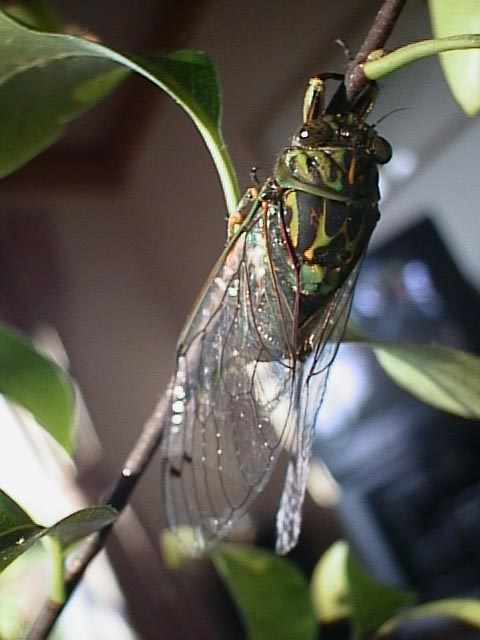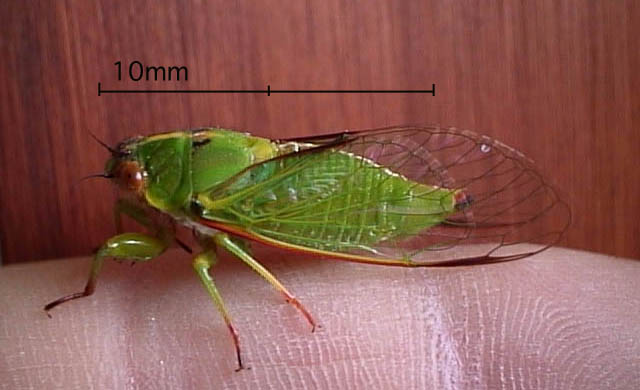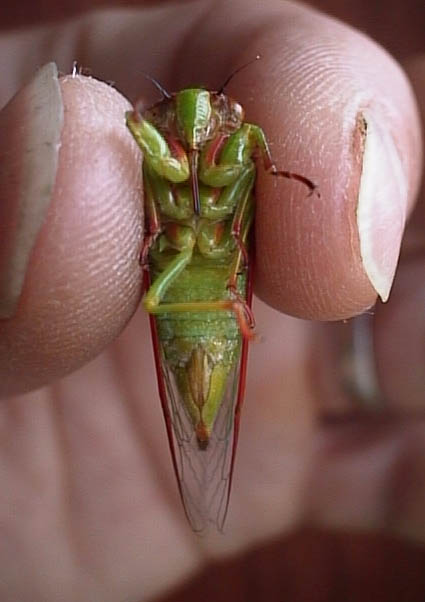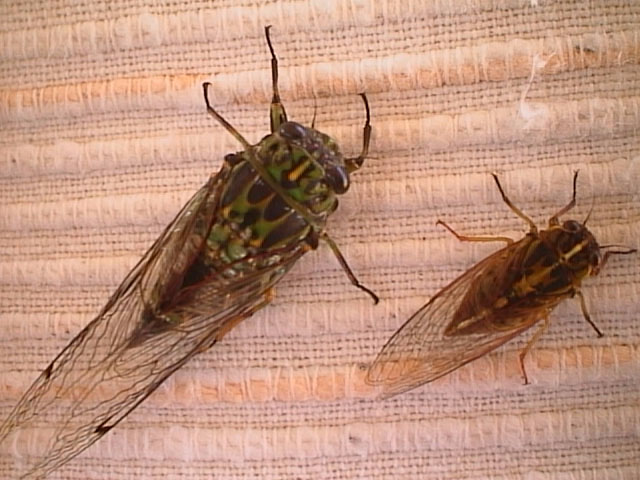Cicada
Amphipsalta spp.

Kikihia spp.



Left Amphipsalta spp., Right Kikihia spp.


Kikihia spp.



Left Amphipsalta spp., Right Kikihia spp.
|
ボディ 28mm(Amphipsalta spp. 大型種) ボディ 22mm(Kikihia spp. 小型種) ニュージーランド全土にわたって分布。正確には5属40種以上ものセミがいるが、釣りに関係した部分だけでいうなら、主に林に発生する大型種(写真1番上と2番目)と、主に草原に発生する小型種(写真3番目とその下)に分けられる。大型種は毎年出るものの、年と場所によって発生数に大きな偏りがある。例えば、トンガリロ川下流部では、95年、98年に大発生があった。発生時期は、1月終わりから2月一杯。発生のピーク時には、釣りをしていると頭が痛くなるくらい林全体がうるさく鳴り響く。普段滅多にフライに見向きもしない大型ブラウンが、ドライフライで面白いように釣れる。 小形種(Kikihia spp. Maoricicada spp.など)は、同じ種であっても真緑のものから茶色までと、色の個体差の幅が大きい。草原に囲まれた湖などでは、風に飛ばされたセミが鱒の格好のえさとなる。 |
|
|
|
Body Amphipsalta spp. 28mm Body Kikihia spp. 22mm It distributes all over New Zealand. There are five genera and more than forty species. However for a fly fisherman, they can be grouped into two types, a big noisy cicada which hatches in a bush (top two photographs) and the other, a small cicada which hatches at grassland (third and forth photographs) . They basically hatch every year, however the number varies from year to year. For example, at the lower Tongariro River, an enormous amount of big cicada (Amphipsalta spp.) had hatched on '95, '98 and 2002, emerged between the end of January to mid February. A large number of huge brown trout, usually ignore any fly, rise frantically to cicadas and its imitations. The small type, Kikihia spp. Maoricicada spp. etc, varies in color from vivid green to dull brown even in same species. In a lake surrounded by grassland, wind blown cicadas become a favorite food source for trout. |